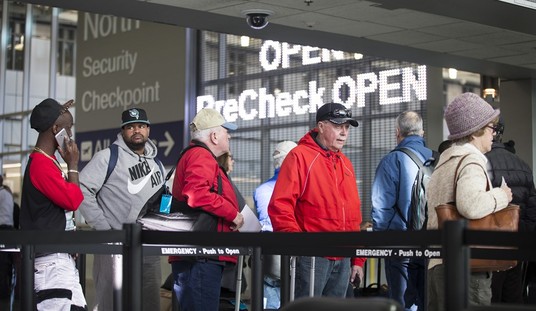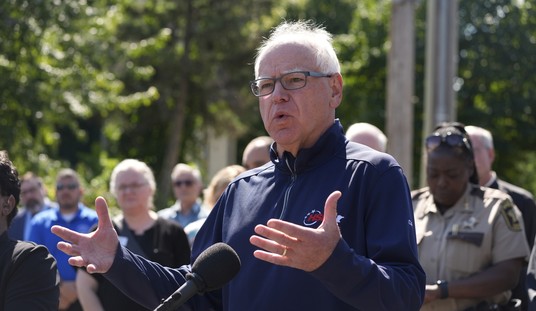Saturday’s South Carolina primary wasn’t exactly what the polls predicted, but it was something of a Goldilocks result: neither good enough nor bad enough for any of the top three candidates to be decisive. With 47 states plus DC and five territories to go, we have a long march still ahead of us.
The Polls: Rubio’s Iowa Redux
The final poll averages had Donald Trump leading Ted Cruz 31.8 to 18.5 in RCP, 33.9 to 19.3 in HuffPo, so Trump’s 32.5 to 22.3 margin over Cruz was not that far off, and testifies to the continuing strength of Cruz’s ground operation in maximizing his showing. But as in Iowa and New Hampshire, the real poll story was Marco Rubio’s late movement – up in Iowa, down in New Hampshire, and up again here: RCP had him at 18.8, HuffPo at just 15.9, and instead he pulled a hair ahead of Cruz at 22.4.
What happened is not hard to trace: with his big endorsement by Governor Nikki Haley, Rubio surged at the end, just as he had in Iowa. The exit polls confirm this: Trump won 45-20-16 over Cruz-Rubio among the 54% of voters who decided more than a week in advance, but Rubio won 28-26-17 among the 46% of voters who decided within the final week.
One lesson there, of course, is not to underestimate Rubio as a closer. But the other is the dire need for the surviving campaigns to start pounding Trump earlier, so he’s not sitting on such huge leads coming into later states. SuperPACs have spent a colossal $215 million in this campaign so far, and just $9.2 million of that has been targeted at Trump, less than 4% of the total and a tiny fraction of the tens of millions in negative ads dumped on Rubio. Money is likely to come pouring into Rubio’s coffers now that he has knocked out Jeb Bush and now that John Kasich has effectively admitted that he is not in the race with the goal of winning the nomination. If I’m working on Rubio’s strategy, I’m looking to concentrate heavy fire against Trump starting the instant you can get on the air in the big March 8-15 states: Florida, Michigan, Ohio, Illinois, North Carolina, and Missouri.
Turnout: All Hands On Deck
For the third straight state, Republicans broke their prior state record for primary/caucus turnout. How big was the voter turnout in South Carolina? Even if you didn’t count a single Trump voter, more people still voted than in the entire 2008 GOP South Carolina primary. Ted Cruz got more votes finishing third than McCain in 2008 or Bob Dole in 1996 got finishing first:

That turnout explosion, as in 2000 (which almost matched this one by turnout as a percentage of eligible voters, or “VEP”), was juiced by a dramatic rise in turnout by Evangelical Christians (72% of the vote compared to 65% in 2012, 60% in 2008). Turnout was 76% Republicans (with 22% Independents and 2% Democrats), compared to 80% Republicans in 2012, 71% in 2008, and 61% in 2000.
Strong turnout among these groups undoubtedly helped Cruz and Rubio, but not as much as you’d hope: Trump actually ran 3 points better with Evangelical Christians than other voters and only 1 point worse with Republicans than independents. Where those splits mattered a lot more was in the shape of the other 66-70% of the vote: Ted Cruz did twice as well with Evangelicals as with non-Evangelicals (27-13), and he and Rubio both ran better with Republicans than with independents (24-17 for Cruz, 23-19 for Rubio). Cruz won “Very Conservative” voters again with 35% of the vote, and they were 38% of the electorate, but faded badly to 17% with the 43% of voters who were “Somewhat Conservative” and just 7% with Moderates (17% of the vote). These are troublesome signs for Cruz if he wants to expand his base in states with fewer religious conservatives than Iowa and South Carolina.
Meanwhile, John Kasich was a vastly larger factor with non-Evangelicals (19% vs 5% with Evangelicals) and independents (13% vs 6% with Republicans). Kasich is the heir to the old McCain 2000 type of voter in this race. Kasich got 21% of the Moderates but little else; Trump and Rubio both did about the same with Somewhat Conservative and Moderate voters and only a little worse with Very Conservative voters.
But in another way, the old Dole/McCain voters are disappearing, as veterans and active military were 17% of the vote compared to 21% in 2008, and likely to decline in future races. Cruz did a few points better with veterans, but they had no clear favorite with the three vets in the race (Perry, Graham and Gilmore) out of the running.
The two candidates who ran best with young voters compared to their other showings were Cruz (who won voters under 30) and Carson (who cracked double digits among voters under 44 but was a non-factor otherwise), an interesting finding given that the youngest voters went to Ron Paul in 2012. Jeb only broke double digits among voters over 65. Trump did better with men than women, 36-29, but the gender gap was not a major factor for other candidates.
Trump: Still Robo-Buchanan
Trump’s coalition is still heavily weighted to the less educated voter (he dropped from 45 to 40 to 29 to 20 as you advanced from high school grads up the ladder to post-grad educations; Cruz showed a less dramatic pattern the same way, Rubio, Kasich and Bush the opposite, with Rubio winning the most educated and urban voters). He presumably won lower-income voters; the exits did not ask, but he did do best with voters most concerned about the economy and angriest at the government.
Immigration was the top issue for just 10% of voters, but Trump won 51% of them. Yet more than half the voters in the primary – I repeat, 53% of the voters in a Deep South Republican primary won by Donald Trump – favor “a chance to apply for legal status” rather than deportation for illegal immigrants. Rubio beat Trump and Cruz 31-22-18 among these voters (showing the ability of voters to compartmentalize this issue better than pundits, Rubio also got 15% of the voters who want all illegal immigrants deported.
Anyway, the factional nature of Trump’s support reveals itself when you start looking at the overall vote totals and percentages. He’s now at 31.9% of the popular vote, a strong lead by traditional standards but still a ways from the 45% level where frontrunners start to pull away, and the sooner the last two candidates stuck in single digits (Kasich and Carson) face reality, the sooner Rubio and/or Cruz can start consolidating the two-thirds of GOP voters who have yet to follow his flag:

Trump got crushed with the 37% of voters looking for a “shares my values” candidate (Cruz-Rubio-Trump 37-27-8), and the 15% who wanted a “win in November” candidate (Rubio-Trump-Cruz 47-21-17), so those are the pitches that are working best against him (note that this is a much better result on ‘electability’ for Rubio than in New Hampshire or Iowa); where both Cruz and Rubio need to work at Trump is the 31% of “can bring needed change” voters, who went 45-19-16 Trump-Cruz-Rubio.
While Trump’s win looks big, it’s actually the second-smallest margin of victory ever in the South Carolina Republican primary (to McCain in 2008) and the smallest percentage of the vote for a winner, and Trump got fewer actual votes than Newt Gingrich did in 2012 or McCain in a losing effort in 2000:

If that’s partly the result of a divided field, it’s also a reminder that if the Jeb voters and the voters of other later-departing contenders go more to Trump’s opponents, his ability to exploit division and run on just one faction of the party evaporates. For all the agonizing about how to appeal to Trump voters, if Trump can’t expand his vote, he’s going to run up short. His 35.3% showing in New Hampshire looks less impressive when you consider that every nominee since 1980 had at least one win bigger than that in the first three states:

Yes, everything that’s true of Trump in that regard is truer of his opponents. But the point is, this race is a long way from over.
TrusTED or BusTED?
While Rubio is gearing up for a long war, the real spotlight will soon shift to Cruz. Cruz bet his early campaign on Iowa and South Carolina, and his win in Iowa is enough to keep his disappointing showing in South Carolina from sinking him. But unlike Rubio, he has no structural windfall coming his way next, and his strategy all along has been to land a knockout blow on March 1 in the “SEC Primary,” plus the last few deep-red Southern states that follow it on March 5 (and Mississippi on March 8). Cruz is a ways from needing to throw in the towel just yet, but the imminent approach of his best stretch of the calendar means he needs to redouble his efforts to close the gap on Trump. If he can’t do that on March 1, he may be looking within a week at a situation where he’s the one who needs to make way for Rubio. If he can, and Rubio can’t break through for some actual wins, it will be Cruz with the upper hand arguing that he should earn the right to be the last man standing against The Donald.













Join the conversation as a VIP Member